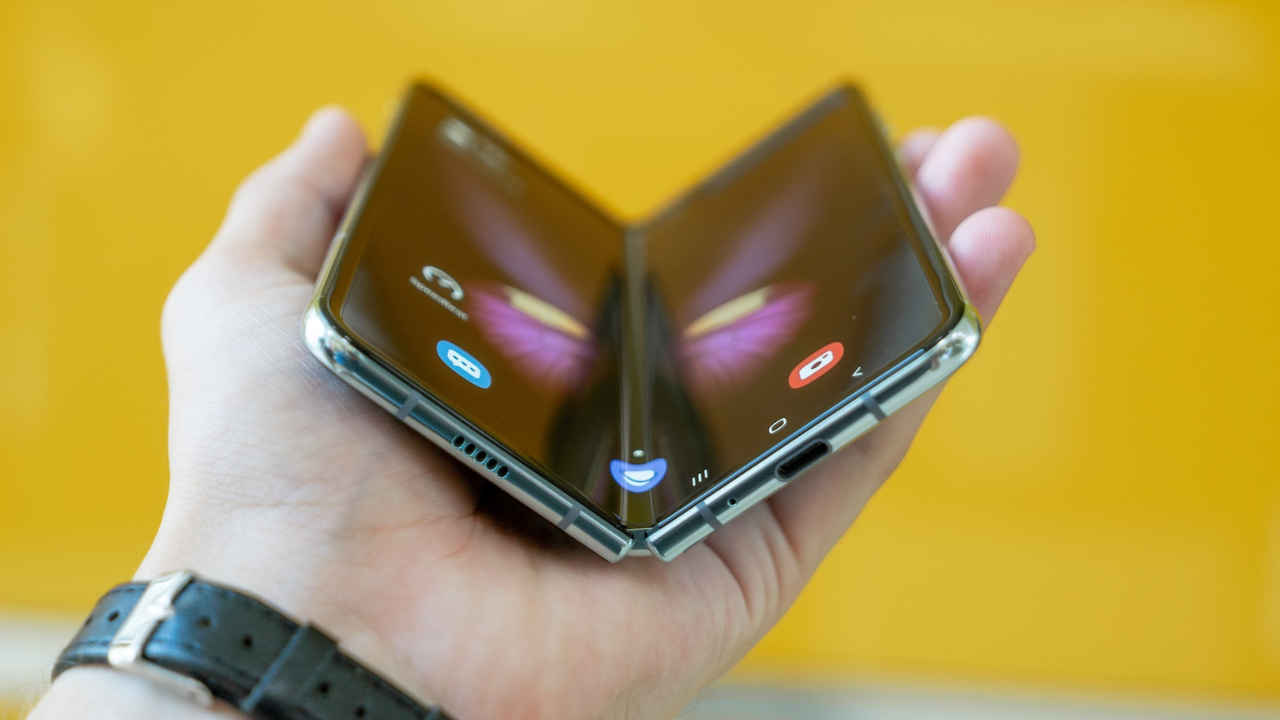Foldable screens are unfolding the future in 2023

Everything about a foldable display device seems so spectacularly surreal, absolutely absurd and irrationally impossible that you almost feel it shouldn’t exist. They represent a much-needed flight of fancy from phone manufacturing companies’ silent stalwarts and hidden geniuses – their industrial designers.
I would be lying if I didn’t concede that foldable screen devices have unleashed a much-needed breath of fresh air into the over-saturated world of candybar phones out there. Whether it’s an iPhone or Samsung or OnePlus, smartphones have been homogenised and started to look the same as each other for more than a few years now. Lacking any creative spark of any kind on the design front, most mainstream smartphones have nothing but induced yawns in terms of how they largely look and feel unoriginal, give or take a few choice embellishments once in a while.
Also Read: 3 foldable phones announced at MWC 2023
Right from its inception, I’ve never been a huge fan of the foldable screen device trend, harbouring a few key inhibitions. On a fundamental level, I believe it introduces unnecessary moving parts into what has become the traditional candy bar design sported by all modern smartphones. For example, if a screen is folding or bendable in a smartphone or laptop, some element of that device’s design has to accommodate that screen folding/bending, right? This design tweak, whether it’s in the form of a hinge or some other contraption, has the potential to introduce structural weakness in the phone’s body, making it susceptible to physical damage faster than a conventional candybar phone. Just like the solid brick wall of your house is as strong as its weakest point (the door or window frames), a foldable screen phone would naturally be more susceptible to breaking than a normal phone with no hinges, right? Logically, it makes sense. And I was from this school of thought until I started using the Samsung Galaxy Z Flip3 5G and Samsung Galaxy Z Fold3 5G in 2021. It definitely opened my eyes to the hidden promise and untapped future of foldable-screen phones or laptops – but only if implemented well, of course.
Back in 2019, while browsing the aisles at Mobile World Congress, I saw bendable screen phone concepts that spanned the full spectrum from whimsical fancy to freakishly bizarre. Prototypes like the Huawei Mate X came close but didn’t amount to anything more than a fragile glimpse of the future with little substance. Incidentally, I caught a glimpse of the Samsung Galaxy Fold — Samsung’s very first foldable screen phone — at the same event. It was a good start, but far from a finished product. There were plenty of reasons not to buy a foldable screen phone back then, prime among which was design and usability factors, both of which have been worked upon, honed and polished by foldable screen device makers over the past four years.
Also Read: List of 8 phones announced at MWC 2023 including 3 foldables
Fast forward to 2023, and Digit’s coverage of MWC this year revealed bigger, better and even cooler foldable screen device concepts from the likes of Oppo, Samsung, and Lenovo, to name a few. Digit’s own Dhriti Datta, who was covering MWC from Barcelona, came back visibly impressed with the improvements she saw on yesteryear's foldable screen device concepts and the improvements they seem to be making year-on-year. Even Sushant Talwar, who covered the Oppo N2 Flip launch for Digit, had great things to say about it. The screen materials and all the moving parts that enable the foldable screens to, well, fold and unfold, seem to be getting better, sturdier, and more reliable. But we all know that buying a new device isn’t just about its short-term feel-good factor but all about its long-term usability and sturdiness.
If I have to be 100 per cent honest with myself, I don’t think I’ll be using a foldable phone as my daily driver anytime soon – don’t get me wrong, I admire the significant progress they’ve made over the last two years and I’m fascinated by the possibilities they seemingly unlock. Call me old-schooled or conservative when it comes to ostentatious displays (pun intended), but I’m not fully sold on a foldable screen phone or laptop’s impact on my digital habits or overall usability over a long period of time to justify making that investment anytime soon. Maybe because I haven’t tried a foldable screen device for long enough, and that’s precisely what’s preventing me from imagining how it can help me get more out of less. I’ll eat my words and tell you when I cross that bridge, sooner or later.
This column was published in Digit magazine’s March 2023 issue.
Jayesh Shinde
Executive Editor at Digit. Technology journalist since Jan 2008, with stints at Indiatimes.com and PCWorld.in. Enthusiastic dad, reluctant traveler, weekend gamer, LOTR nerd, pseudo bon vivant. View Full Profile




